Search Results for 'Radio ireann'
14 results found.
The Galway Races
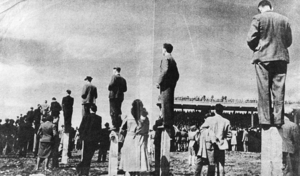
Records of organised race meetings in County Galway go back to the mid-13th century when what were known as ‘horse matches’ were run under the King’s Plate Articles. In 1764, there was a five-day race meeting at Knockbarron near Loughrea. The first race day at Ballybrit was on August 17th, 1869 when contemporary records show that some 40,000 people turned up to watch the sport. The racecourse, measuring one and a half miles, was laid out by a civil engineer, a Mr. T. Waters and was described as “Covered with herbage or moss and excelling any course in Ireland for good going”.
The Patrician Musical Society
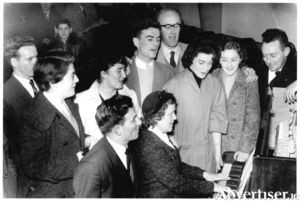
On this day, February 29, 1952, a meeting was held in the Bish the purpose of which was, “That a choral society titled the Patrician Choral Society under the auspices of the Patrician Brothers Past-Pupils’ Union be here and now formed.” The motion was proposed, seconded and passed unanimously. Jack Browne was elected President, Thomas Lydon as Vice-President, Jack Doherty and Brother Cuthbert as directors and Jack Begley as Treasurer.
St Patrick’s National School

On January 15, 1827 two Patrician Brothers, Paul O’Connor and James Walsh, took up residence in Lombard Street and set up the Monastery School. The attendance on that first day was 300 boys, many of whom had little interest in learning because they were poor and hungry. So the Brothers set up The Poor Boy’s Breakfast Institute in May 1830. It continued seven days a week, 365 days a year for many years after the founders' time. The breakfast consisted of porridge with molasses or treacle, and during the Famine, they fed 1,000 boys every day. The ‘Old Mon’ became a vital cog in education in Galway.
Shaskeen Snippets: Half a century of pure talent
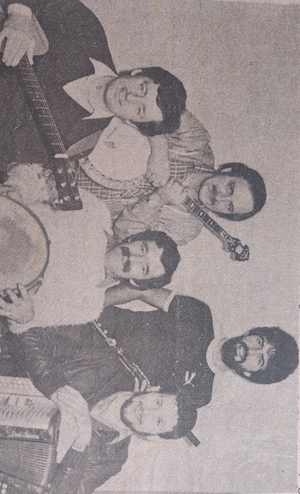
Traditional music band, Shaskeen, has been a cornerstone of Irish Traditional music and song for over half a century and show no signs of slowing down, ahead of their appearance in the Town Hall Theatre on June 10 as part of Advertiser Events, we look back through various publications that have covered the group's long history.
The little miracle that saved Galway Arts Festival 1985
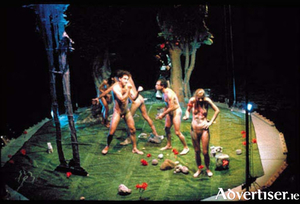
It seems laughable today but in 1958 Archbishop John Mc Quaid of Dublin, obsessively monitored Irish life to the extent, that he did not have to ban a film, book or play outright, it was sufficient for his secretary to make it known that the archbishop had wondered if that (name of film, book or movie) was the sort of thing a good Catholic should witness.
The Currach Races, Salthill
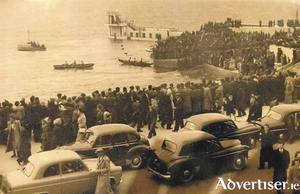
The Currach Races … An Tóstal … Rásaí na gCurrachaí … 60,000 people plus in Salthill … lines of people four and five deep along the Prom … Every vantage point taken … specially designed currachs everywhere, up on trailers, sitting on grass verges, at the water’s edge … Always a crowd of people inspecting them … The currachs on the sea like tiny insects, indistinguishable in the mist and drizzle … Mountainy men and island men … báinín … Bréidín … beautiful handknit Aran croiseanna … Caps … caps … thousands of caps … women in many different styles of shawl … some red petticoats … stalls everywhere selling minerals, sweets, fruit … many stages erected along the Prom hosting sean nós singers, dancers, traditional musicians … The atmosphere of a massive aeríocht … Programmes written in the old Irish script … strange accents from Donegal … Three-card trick men … canoe races between the currach races … Trawlers marking the race route … Kerry accents … canúint Chonamara … A cluster of bookies at Blackrock … Bottles of stout and lemonade … Gaelinn spoken in lilting Cork accents … Gaeilge spoken by Aran Islanders who had come in on the Dún Aengus … A marquee for food at Blackrock … another for visiting crews … The Joyces of Inis Bearacháin … Bands playing at the Ladies Beach and at Blackrock … Currach men from Mayo, Sligo, and Clare … Commentary on the races blaring from speakers all over Salthill … A festival dance in the Hangar. This was the All-Ireland Currach Racing Championship which was first held in 1953 in the Claddagh and thereafter for several years in Salthill. The Prom provided the ideal viewing stand, the oarsmen provided the excitement, and the crowds provided the atmosphere.
The magic of radio in days gone by...

When I was boy, as soon as school ended, my mother whisked us off to her home in west Cork, where my brother, sister and I spent most of the summer. It was a very different place to Galway. We enjoyed large family picnics, long afternoons fishing and rabbit shooting (everything was eaten), and picking fruit and vegetables in my grandparents’ large garden. Looking at old black and white photographs our everyday clothes were zipped corduroy jackets, short pants and wellies.
Seán Bán Breathnach — a pioneer of the culture of cráic
When historians try to source the creators of the culture of craic that is associated with Galway, they will surely hover for a considerable while over the name of Seán Bán Breathnach.
A night of Irish trad at the Town Hall
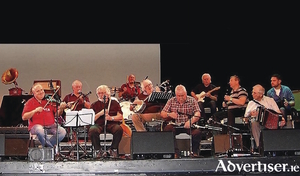
THE TURBULENT, inspirational, and ever-evolving journey of Irish music, will be performed by 16 traditional musicians, in the Town Hall Theatre tomorrow night.
Who fears to speak of Ernie O’Malley?

This week’s title borrows from John Kells Ingram’s famous 1843 political ballad, "The Memory of the Dead". In his poem, Ingram posits that later generations turned their fattened backs on the memory of the rebels of 1798, "Who Fears to Speak of '98?" Ingram was not a republican, but he penned his piece for the nationalist paper The Nation because he sympathised with what the United Irishmen had attempted to do and he had always pledged to defend brave men who opposed tyranny.

